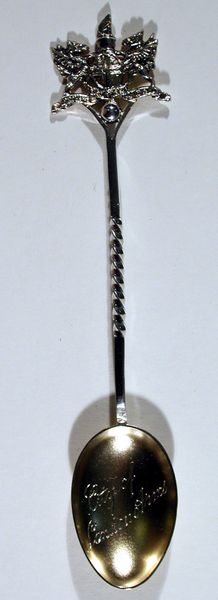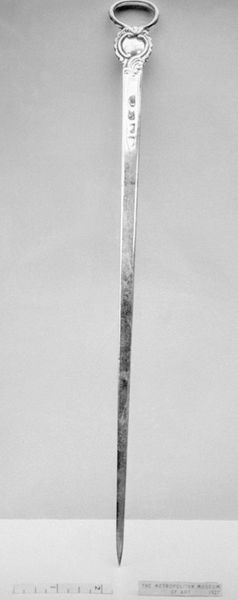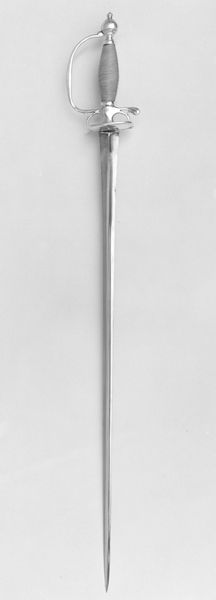
Het statief met de maan, onderdeel van het planetarium, tellurium, lunarium c. 1800 - 1808
0:00
0:00
metal, bronze, sculpture
#
neoclacissism
#
metal
#
bronze
#
geometric
#
sculpture
Dimensions: height 12.6 cm, width 2.8 cm, depth 1.1 cm
Copyright: Rijks Museum: Open Domain
Editor: So this is "Het statief met de maan, onderdeel van het planetarium, tellurium, lunarium", created around 1800 to 1808 by Hartog van Laun, and made of metal and bronze. It looks like a component, almost like a little architectural model. What am I really looking at here? Curator: You are viewing a sculptural fragment belonging to a larger educational device, probably commissioned for a wealthy individual during a time when understanding the cosmos was seen as essential knowledge. The object represents Neoclassicism’s fascination with reason and order applied to the universe. What do you think was the intended public for something like this? Editor: Hmmm, based on that, and judging from the materials, I’d say wealthy patrons interested in scientific advancement. So, the lunarium itself was a signifier of status? Curator: Precisely. Consider the role of scientific instruments during the Enlightenment. These were objects not only of knowledge but also of display, intended to impress upon visitors the owner's enlightened status and control over knowledge. Also, how does this geometrical object speak to the social drive toward "rationality" in Neoclassicism? Editor: I guess, by visually embodying this controlled, geometric understanding of natural laws. But I wonder, did such scientific objects truly democratize knowledge or mostly reinforce existing power structures? Curator: That's a keen observation. Often, they did both. While presenting an image of enlightenment, they simultaneously cemented the patron's elevated position within society by possessing such objects of prestige and esoteric knowledge. Editor: Fascinating! It is not just a device; it’s a symbol within a much broader socio-political game! Curator: Precisely. Looking at this sculpture differently now? Editor: Absolutely, I didn’t see how much context influences the piece at first glance.
Comments
No comments
Be the first to comment and join the conversation on the ultimate creative platform.













